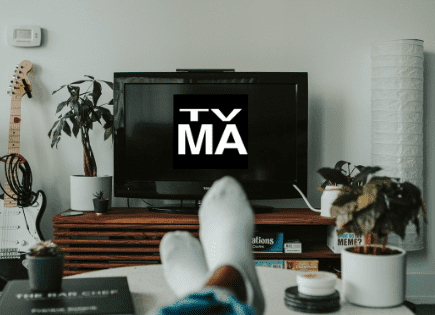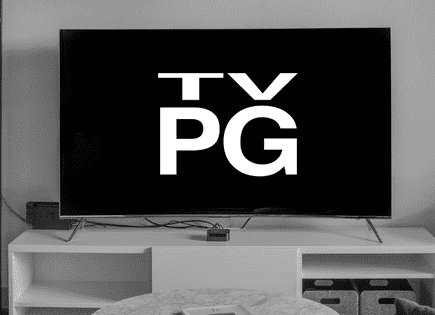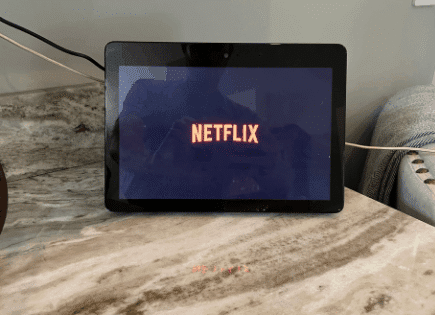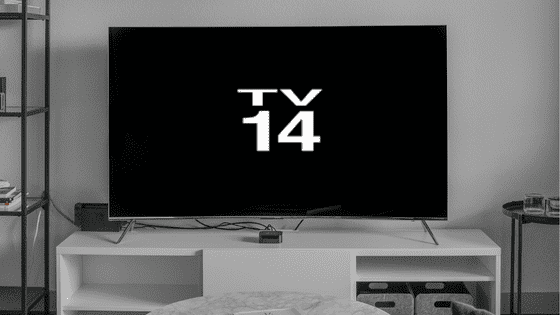
What Does TV 14 Mean? (TV-14 vs. PG-13 | Key Difference)
If you’re with the family and about to sit down to watch a new show on Netflix or Hulu, and you see “TV 14” pop up, you might be wondering what it means.
Broadcast and cable television networks and program producers provide the public with different TV ratings that address how age-appropriate their content is. The ratings are meant to help parents decide which shows they should let their kids watch.
TV 14 meaning
TV 14 means the show contains material that most parents would find unsuitable for children under the age of 14. Programs with this rating have intensely suggestive dialogue, strong coarse language, intense sexual situations or intense violence. Stranger Things is a popular example of a TV 14 rated show.
A TV 14 rated show is basically the equivalent of a PG-13 rated movie, but usually a bit worse.
TV Parental Guideline ratings
It’s no secret that the content we Americans consume has gotten increasingly sexual and violent in nature over recent years.
I challenge you to find a single show on the air today that isn’t sexualized or violent in some way.
Well parents started to get increasingly concerned about this trend, so back in 1996 the US Congress proposed that the television industry start assigning ratings to their shows. This would give parents some sense of the type of content their children were watching.
About 10 days after the proposal, in 1997, the voluntary TV Parental Guideline ratings went into effect.
Shows began presenting a rating to the viewer before the programming began, alerting them that the content they are about to consume is one of the following:
TV-Y

Meant to be suitable for all children. Designed for a very young audience.
TV-Y7 FV

Meant for children age 7 and older. May be more appropriate for children who have acquired the developmental skills needed to distinguish between make-believe and reality.
“FV” label means the show contains more “fantasy violence”. These shows are usually more intense or combative than shows with just the TV-Y7 rating.
TV-G

Meant to be suitable for all ages, although the content may be of little interest to children. These shows have little to no violence, mild language and little or no sexual dialogue or situations.
TV-PG

May have content that is inappropriate for children under the age of 7. May include coarse language, some sexual content, some suggestive dialogue or moderate violence.
TV-14

Contains material that most parents would find unsuitable for children under the age of 14. Programs with this rating have intensely suggestive dialogue, strong coarse language, intense sexual situations or intense violence.
TV-MA

This content is meant to be viewed by adults only and is not suitable for children under the age of 17. Programs with this rating may include crude indecent language, explicit sexual activity, and graphic violence.
TV Parental Guideline content descriptors
As you can tell from reading each of the different TV ratings above, the ratings are really defined by a few main categories: sexual content, language, and violence.
The balance of each of these categories determines the final rating of the show. A show could have some sexual dialogue/situations, but very little, or no violence, and still get a TV 14 rating.
Or vice versa – there could be some violence and no sexual situations.
To help further describe the content, content descriptors were established that can be presented alongside the ratings above.

The content descriptors used are as follows:
- D – Sexual or suggestive dialogue
- L – Coarse or crude language
- S – Sexual situations
- V – Violence
Everyone’s parenting style is different, and these descriptors can help parents make tough choices based on their own beliefs. For example some parents may be OK with sexual or suggestive dialogue but not sexual situations.
In that case, seeing a “D” descriptor might be OK, but an “S” would make the show off limits.
Examples of popular TV 14 shows
The TV 14 rating is really just meant to alert you as the adult, that the show you’re about to watch has some content that is likely not all that suitable for an audience under the age of 14.
But in my opinion, there is fairly wide spectrum when it comes to TV 14 rated shows.
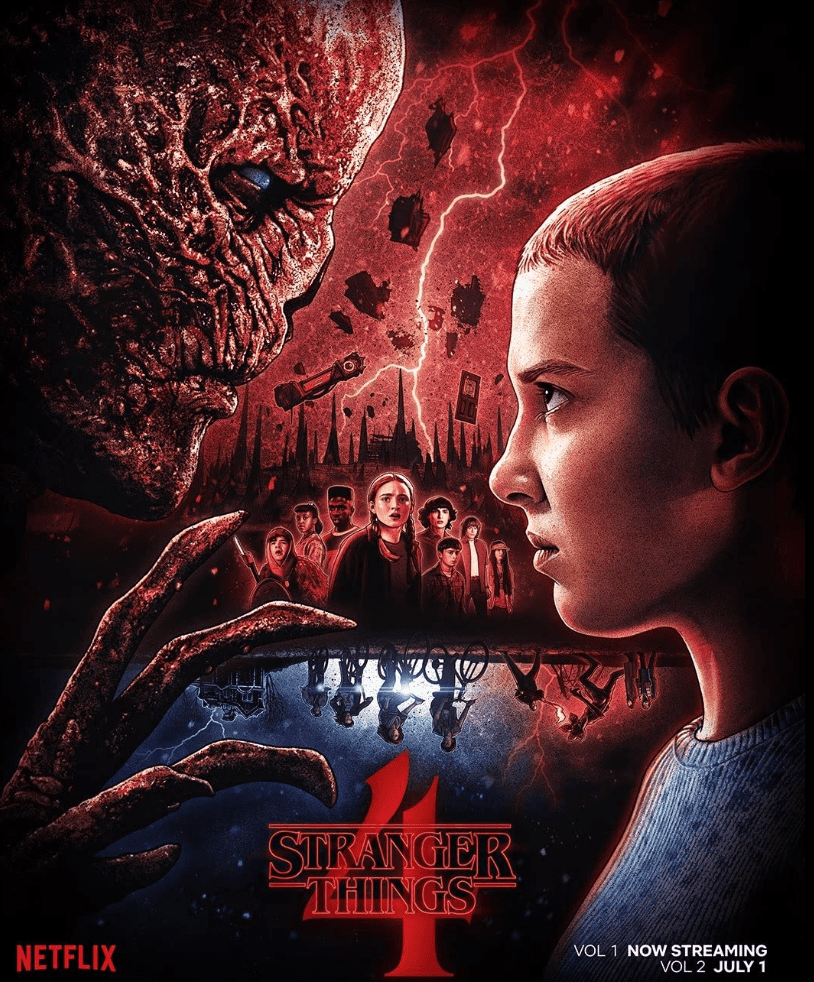
To give you a sense of the type of content that carries the TV 14 rating, here is a list of some popular TV 14 shows:
- Stranger Things
- The Office
- Friends
- Virgin River
- The Lord of the Rings: The Rings of Power
- The Umbrella Academy
- Grey’s Anatomy
- NCIS
- Law & Order
- Suits
- Lost
- The Black List
- The Mandalorian
- This is Us
- The Vampire Diaries
- How I Met Your Mother
- The X-Files
Something else to consider is that all of these shows get a single blanket rating for the whole series, but episode to episode content can vary greatly.
TV-14 vs PG-13
At first glance, TV-14 and PG-14 ratings appear to be similar, if not the same. Just look at the language used to describe them:
- TV-14: Contains material that most parents would find unsuitable for children under the age of 14. Programs with this rating have intensely suggestive dialogue, strong coarse language, intense sexual situations or intense violence.
- PG-13: Parents strongly cautioned, some material may be inappropriate for children under 13 (pre-teen ages). This may include stronger language, extended violence or sexual situations and drug-use.
But there are really two differences between TV-14 and PG-13 ratings:
- The first is that “PG-13” is part a movie ratings system, whereas “TV-14” is part of a separate TV/broadcasting rating system.
- The second difference between TV-14 and PG-13 ratings, and the really the KEY difference, is that TV-14 isn’t “OK” for 13 year olds, whereas PG-13 is.
TV-14 shows typically have a bit stronger language, more intense sexual situations and/or violence than you would find in a PG-13 movie.
Ultimately, what’s deemed “OK” for your children is up to you!
How to prevent children from watching TV 14 show
These days, every TV comes with parental controls. Exactly how you implement those controls will largely depend on your TV make and model.
You can simply YouTube, “Parental Controls Samsung TV”, for example, to get the exact steps. But here are links out to some popular TV brands and their parental control guidance:
- Samsung TV parental controls
- LG TV parental controls
- Vizio TV parental controls
- Sony TV parental controls
- TCL TV parental controls
Essentially there are three levels at which you can apply parental controls to prevent children from watching TV 14 content:
- Cable/broadcasting
- Smart TV app store
- The app itself
Back in the day, before smart TVs came out, you really just had to worry about cable/broadcasting. Block TV-14 cable content, and you’re golden.
Nowadays smart TVs (and devices like Roku and Firestick) have hundreds of different apps that can be downloaded directly to the TV, and content can be streamed on-demand.
This means a lot more content, and a lot of new ways to view TV 14 content. Luckily the new parental controls do a pretty good job accounting for this.
Most TVs allow you to lock down the app store, requiring a password to access certain (or all) apps, and you can even restrict the ability to download new apps.
And finally, you’ll likely want to restrict access WITHIN each app as well.
Take Netflix, for example. You can set parental controls for individual profiles. So if your son is 13 years old, and you don’t want him watching TV-14 content, set up his profile to block TV-14 content.
Conclusion
TV 14 means the show contains material that most parents would find unsuitable for children under the age of 14
There will likely be intensely suggestive dialogue, strong coarse language, intense sexual situations or intense violence
TV 14 is essentially the equivalent of a PG-13 rated movie. The major difference is that TV-14 shows typically have a bit stronger language, more intense sexual situations and/or violence.
Examples of TV 14 shows include Stranger Things and The Office.
If you’re considering using parental controls to block TV 14 content, make sure you are putting restrictions at each of the following levels:
- Cable/broadcasting
- Smart TV app store
- The app itself

